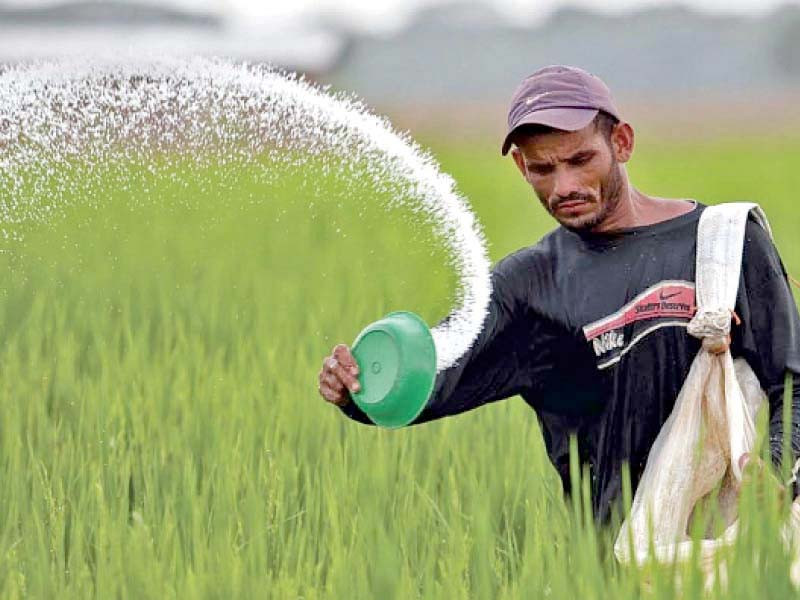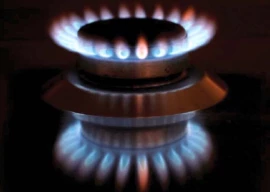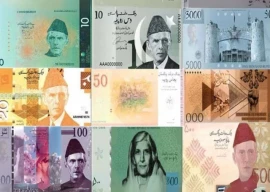
Pakistan’s economic managers have turned down a proposal of imposing another cess on gas consumers to cover 50% of price differential on subsidised gas supply to fertiliser plants.
Among different proposals, one was the recovery of price differential on provision of gas to two fertiliser plants – Fatima Fertiliser (Sheikhupura) and Agritech – by imposing a cess on gas consumers.
The Petroleum Division had submitted the proposal in a recent meeting of the Economic Coordination Committee (ECC).
It said that Sui Northern Gas Pipelines Limited (SNGPL) may be allowed to continue gas supply to Fatima Fertiliser and Agritech plants at the re-gasified liquefied natural gas (RLNG) tariff notified by the Oil and Gas Regulatory Authority (Ogra) for urea production from November 1, 2023 to March 31, 2024 on a full-cost recovery basis.
The ECC was informed that a committee comprising secretary petroleum, secretary finance and secretary industries had met to deliberate on the provision of RLNG to Fatima Fertiliser and Agritech plants.
During the huddle, a few options were examined. It was suggested to recover full RLNG cost from the two fertiliser producers. The second option was to spread the difference between RLNG and indigenous gas prices between the two plants.
Another option was to spread the difference between RLNG and indigenous gas prices over the entire industry and the committee also proposed spreading the gas price difference over captive power plants.
It was suggested to shift both plants on to Mari Petroleum network. Another proposal was to take full contribution from provinces to cover the price differential. Last option was the imposition of cess to cover 50% price differential while the remaining 50% would be funded by provinces.
The ECC observed that there was already a wave of litigation against the gas infrastructure development cess (GIDC), therefore, the proposal of slapping any other cess would not be viable.
Fertiliser manufacturers had received billions of rupees from farmers on account of GIDC but they did not deposit it in the national exchequer. Rather, they filed cases to halt the release of cess.
ECC members suggested that financing options like funding from the Islamic Development Fund and SABIC for urea import should be explored as it would not impact Pakistan’s foreign exchange reserves.
It was noted that Fatima Fertiliser and Agritech could produce 350,000 tons of urea if operated through November 2023 to March 2024 provided they were supplied gas.
The cost of importing 100,000 tons of urea was calculated at $40 million, therefore, import of 300,000 tons would require $120 million. Besides, Rs24 billion would be needed for subsidy on selling costly imported urea at market prices to farmers.
It was pointed out that agriculture was a devolved subject, therefore, provinces should be taken on board to bear the cost of subsidy. Apart from that, substantial foreign exchange would be required for urea import while provinces had not shared the subsidy in the past.
The ECC noted that during last year urea was smuggled without any check, which led to its shortage. Therefore, its actual demand should be assessed through a professional study.
The Petroleum Division highlighted that SNGPL-based fertiliser plants were being provided indigenous gas at a tariff of Rs1,050 per million British thermal units (mmBtu) till October 15, 2023 in compliance with the ECC’s decision.
It was pointed out that the indigenous gas supply could only be extended for 15 days ie, till October 31 as SNGPL did not have indigenous gas to continue its supply to both plants beyond November 1 when domestic consumer demand would go up because of winter.
“In the absence of indigenous gas, only RLNG can be provided at full-cost recovery. If RLNG is provided at the indigenous gas tariff leading to a differential of Rs1,050 per mmbtu, the same has to be picked up as subsidy so that further revenue loss to SNGPL could be avoided.”
In the absence of indigenous gas supply, such a decision would have financial implications of Rs29 billion in terms of tariff differential between RLNG and indigenous gas for five months from November 2023 to March 2024.
The ECC considered a summary submitted by the Petroleum Division titled “Measures to meet requirement of urea fertiliser for Rabi season 2023-24” and approved the proposal.
It directed that since urea production would help mitigate the fertiliser demand of provinces, the cost differential between RLNG and indigenous gas would be picked up by the provinces and the mechanism for reimbursement to fertiliser plants or direct payment to SNGPL, as the case may be, would be developed by the Industries and Production Division, Petroleum Division and Finance Division.
Published in The Express Tribune, November 22nd, 2023.
Like Business on Facebook, follow @TribuneBiz on Twitter to stay informed and join in the conversation.





1737702954-0/fizza-(93)1737702954-0-165x106.webp)










1737614355-0/Express-Tribune-(1)1737614355-0-270x192.webp)

1737546248-0/Waqas-(13)1737546248-0-270x192.webp)







COMMENTS
Comments are moderated and generally will be posted if they are on-topic and not abusive.
For more information, please see our Comments FAQ